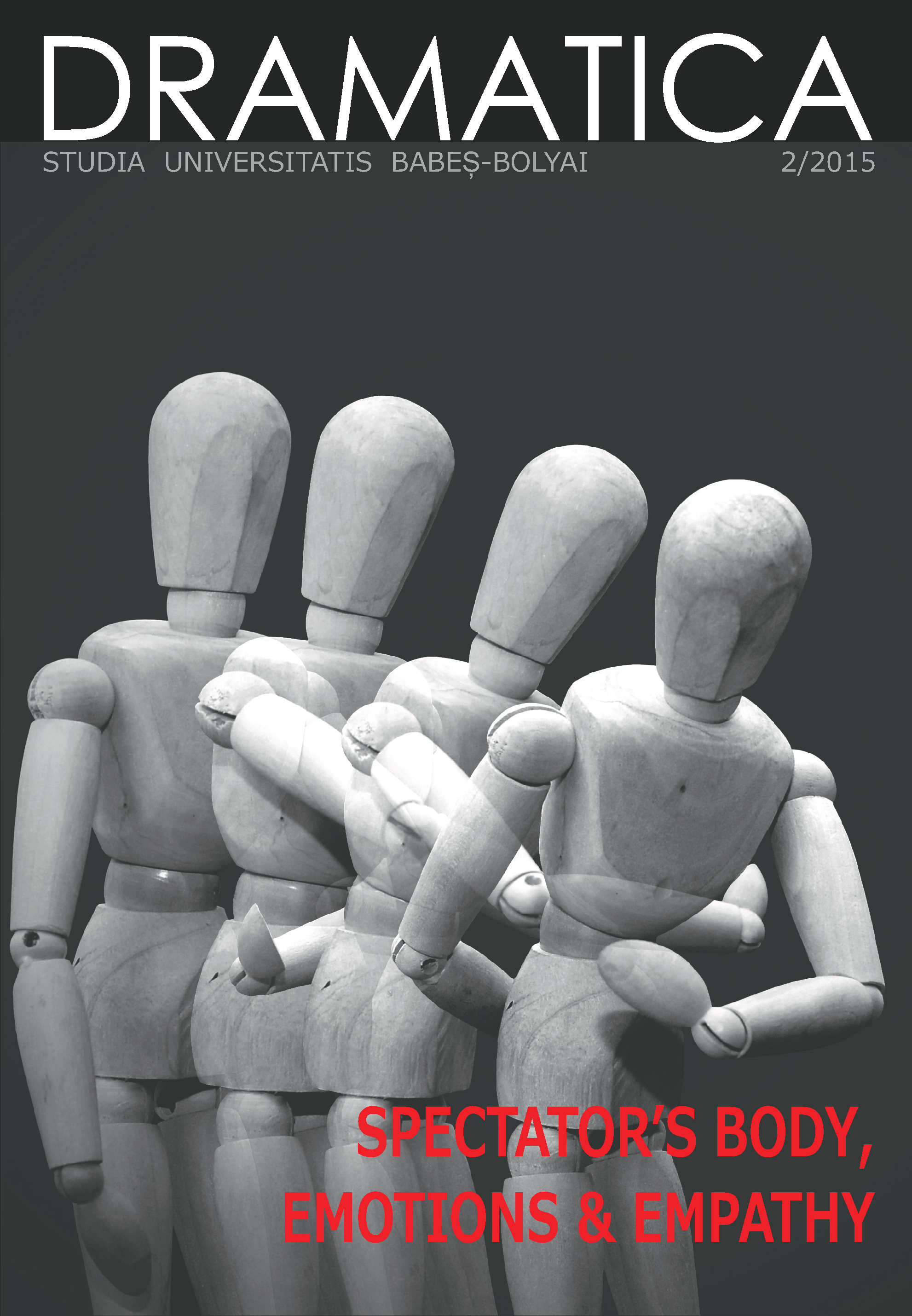Towards Embodied Spectatorship
Keywords:
cognitive approach, audience, spectatorship, emotion, empathy, affect, embodied acting.Abstract
The article discusses the cognitive approach to spectatorship. There are different aspects that interest theatre scholars in the field of spectating research, for example, how audiences perceive the process of acting, how emotions and empathy work, and how spectators create meanings. The main premise for the cognitive approach to spectating is that the engagement of the audience in the performance is foremost corporeal. The article analyses the roots of this standpoint and poses a question concerning the possibility of measuring the impact of theatre. Further, the statement that for spectators the most significant engagement with a performance is emotional is considered. The concept of empathy and kinaesthetic empathy in particular is discussed. The article suggests that the crucial specification for successful audiences’ embodiment is embodied acting and trained body-mind that in fact means coherence within and between the mental and emotional systems. Proposing that most reliable data about the effect of the performance is medical examination, this article introduces the research Thinking Body: Acting Systems’ Analysis and Integration in the Process of the Work of a Contemporary Actor which was implemented at the Lithuanian Academy of Music and Theatre in 2013 –2014. The article suggests that interdisciplinary research with the collaboration of theatre scholars and artists as well as specialists of medicine would help estimate what conditions are most favourable for effective communication between performers and spectators.
References
BENNETT, Susan. Theatre Audiences. A Theory of Production and Reception. Routledge, 1990.
BLAIR, Rhonda. “Image and action: cognitive neuroscience and actor-training”. In: Performance and Cognition. Theatre studies and the cognitive turn. Ed. Bruce McConachie and F. Elizabeth Hart. Routledge, 2006, p. 167–185.
BOGART, Anne. “Foreword”. In: Erin Hurley, Theatre & Feelings. Palgrave Macmillan, 2010, p. ix-xv.
DAMASIO, Antonio. The Feeling of What Happens. Body and Emotion in the Making of Consciousness. Harcourt Brace and Co, 1999.
FRESHWATER, Helen. Theatre and Audience. Palgrave and Macmillan, 2009.
HURT, Melissa. Arthur Lessac’s Embodied Actor Training. Routledge, 2014.
KEMP, Rick. Embodied Acting. What Neuroscience Tells Us About Performance. Routledge, 2012.
LUTTERBIE, John. Toward a General Theory of Acting. Cognitive Science and Performance. Palgrave Macmillan, 2011.
MCCONACHIE, Bruce. “Preface”. In: Performance and Cognition. Theatre studies and the cognitive turn. Ed. Bruce McConachie and F. Elizabeth Hart. Routledge, 2006, p. ix-xv.
MCCONACHIE, Bruce. Engaging Audiences. A Cognitive Approach to Spectating in the Theatre. Palgrave Macmillan, 2011.
MCCONACHIE, Bruce. “Introduction: Spectating as Sandbox Play”. In: Affective Performance and Cognitive Science. Body, Brain and Being. Ed. Nicola Shaughnessy. Bloomsbury, 2013, p. 183–197.
MCCRATY, Rollin. “Heart-Brain Neurodynamics: The Making of Emotions”. https://www.heartmath.org/assets/uploads/2015/03/heart-brain-neurodynamics.pdf
MANCING, Howard. “To see play, read the book”. In: Performance and Cognition. Theatre studies and the cognitive turn. Ed. Bruce McConachie and F. Elizabeth Hart. Routledge, 2006, p. 189–206.
PAVIS, Patrice. “Introduction. A Few Improvised and Provisory Thoughts on Acting Today”. In: Acting Reconsidered: New Approaches to Actor‘s Work. A collection of scientific articles. Lithuanian Music and Theatre Academy, 2014.
WHITE, Gareth. Audience Participation in Theatre: Aesthetics of Invitation. Palgrave Macmillan, 2013.
Downloads
Published
How to Cite
Issue
Section
License
Copyright (c) 2015 Studia Universitatis Babeș-Bolyai Dramatica

This work is licensed under a Creative Commons Attribution-NonCommercial-NoDerivatives 4.0 International License.


